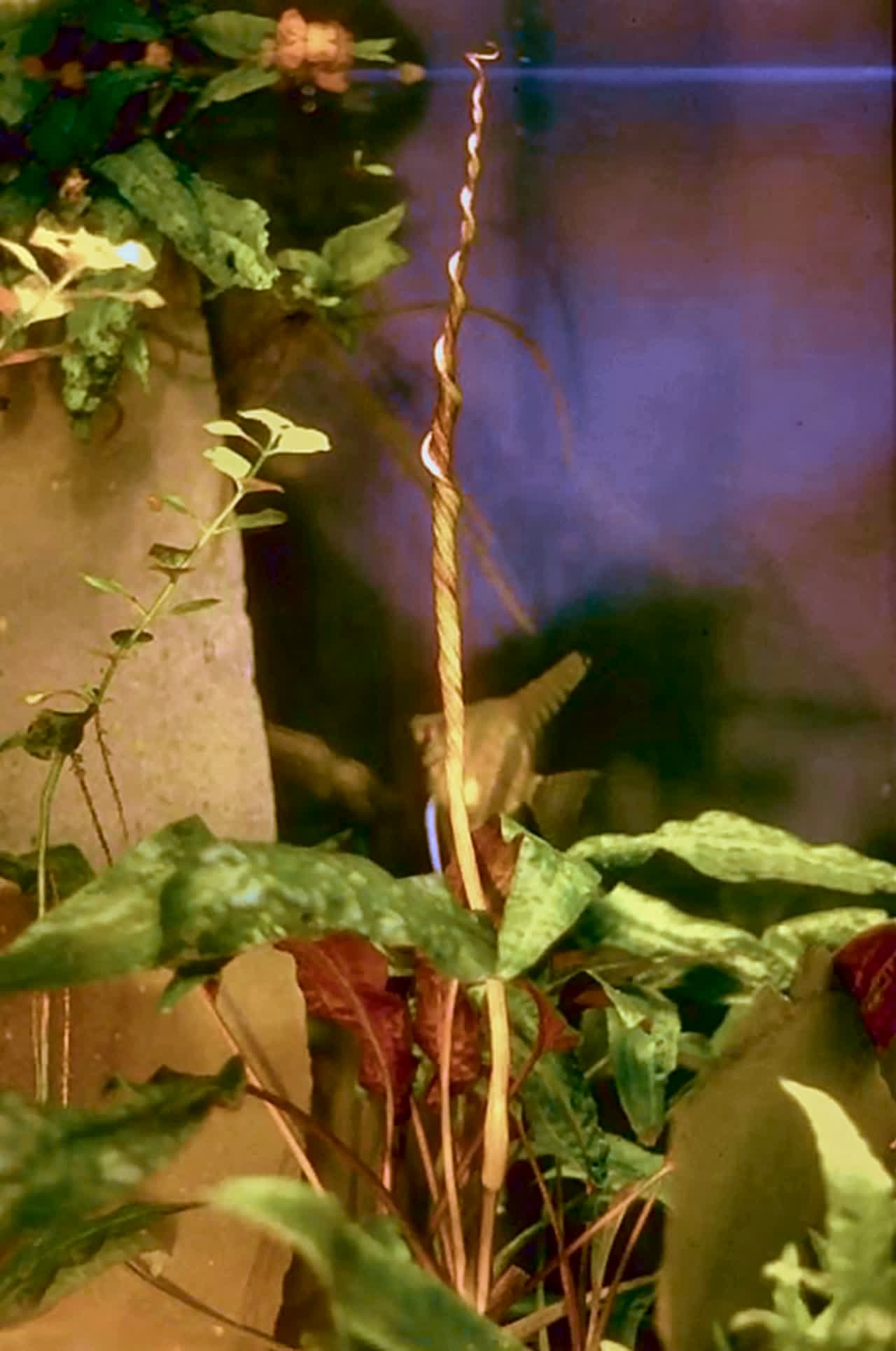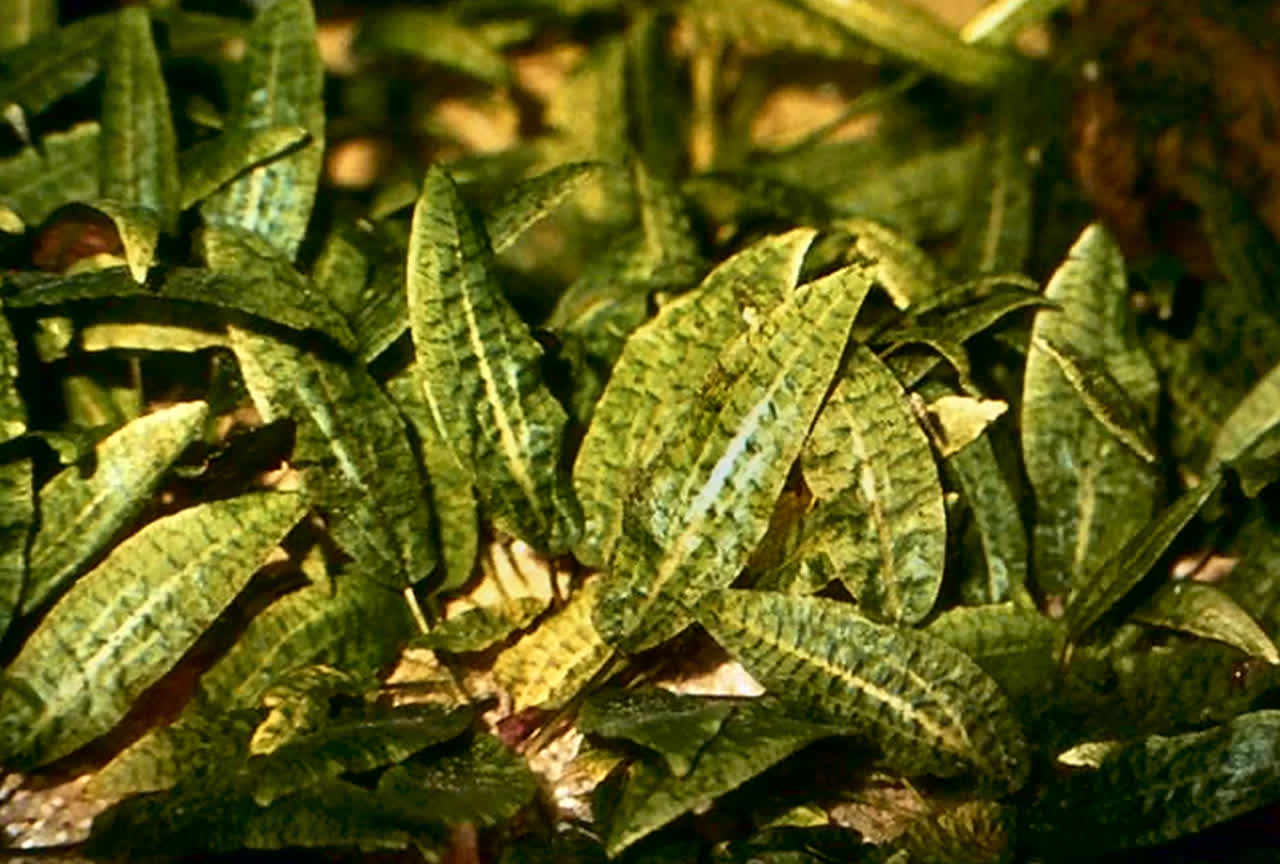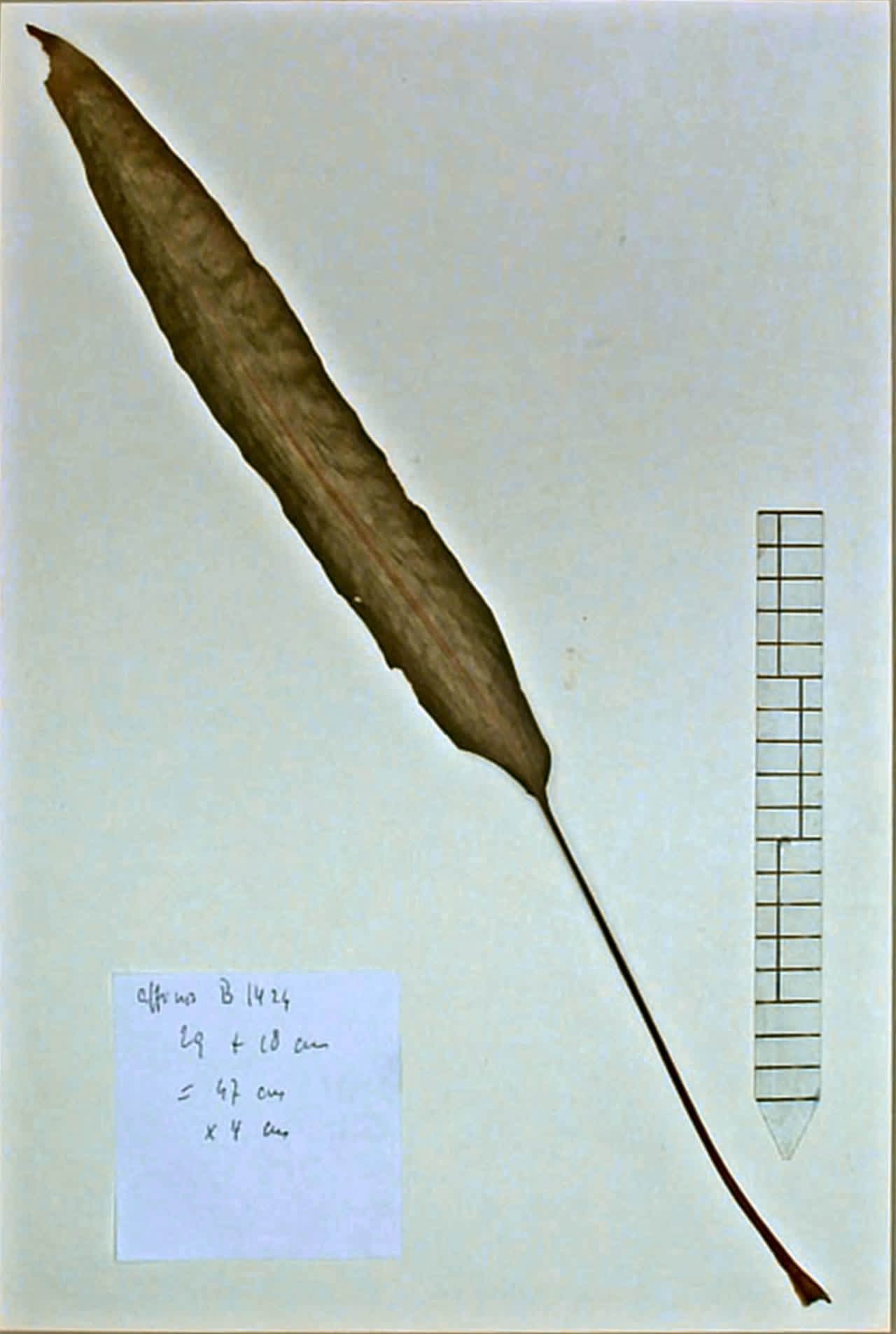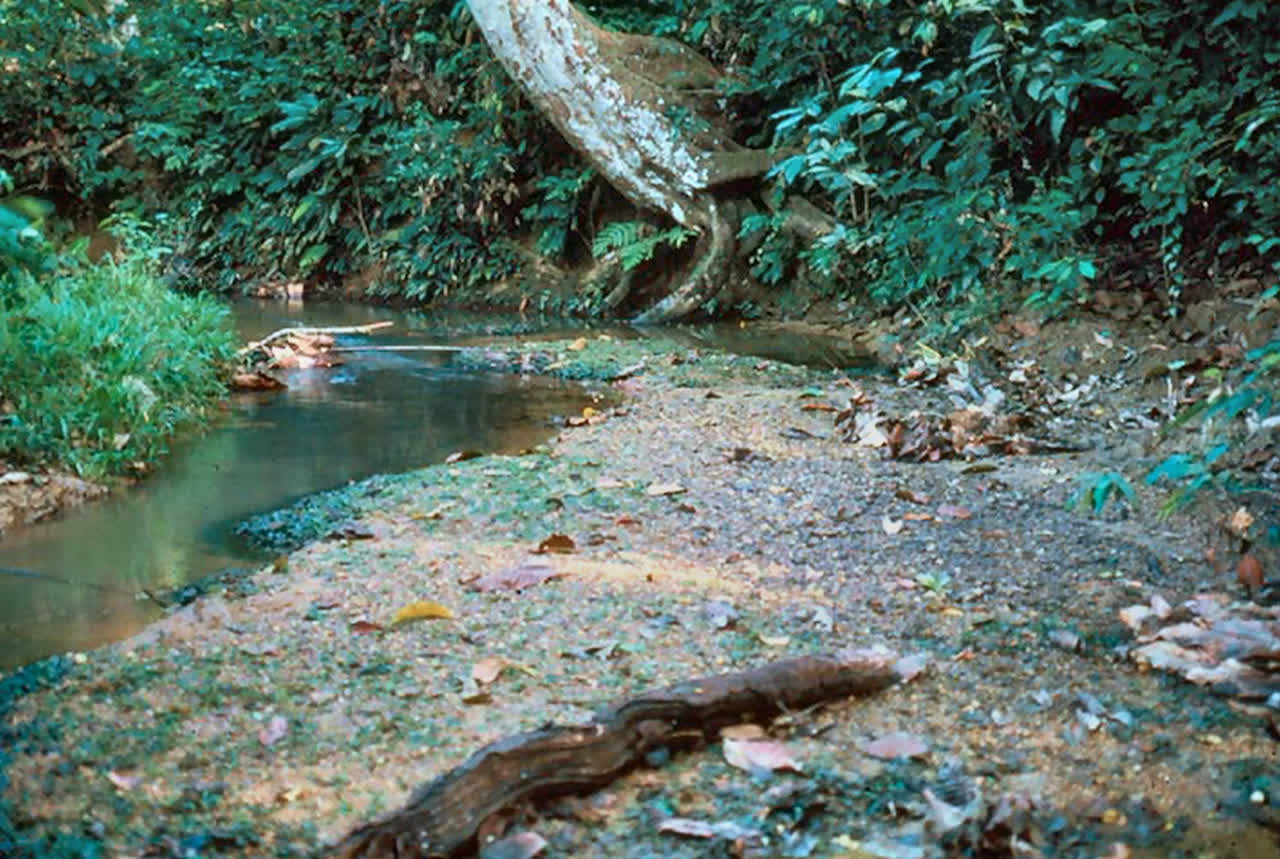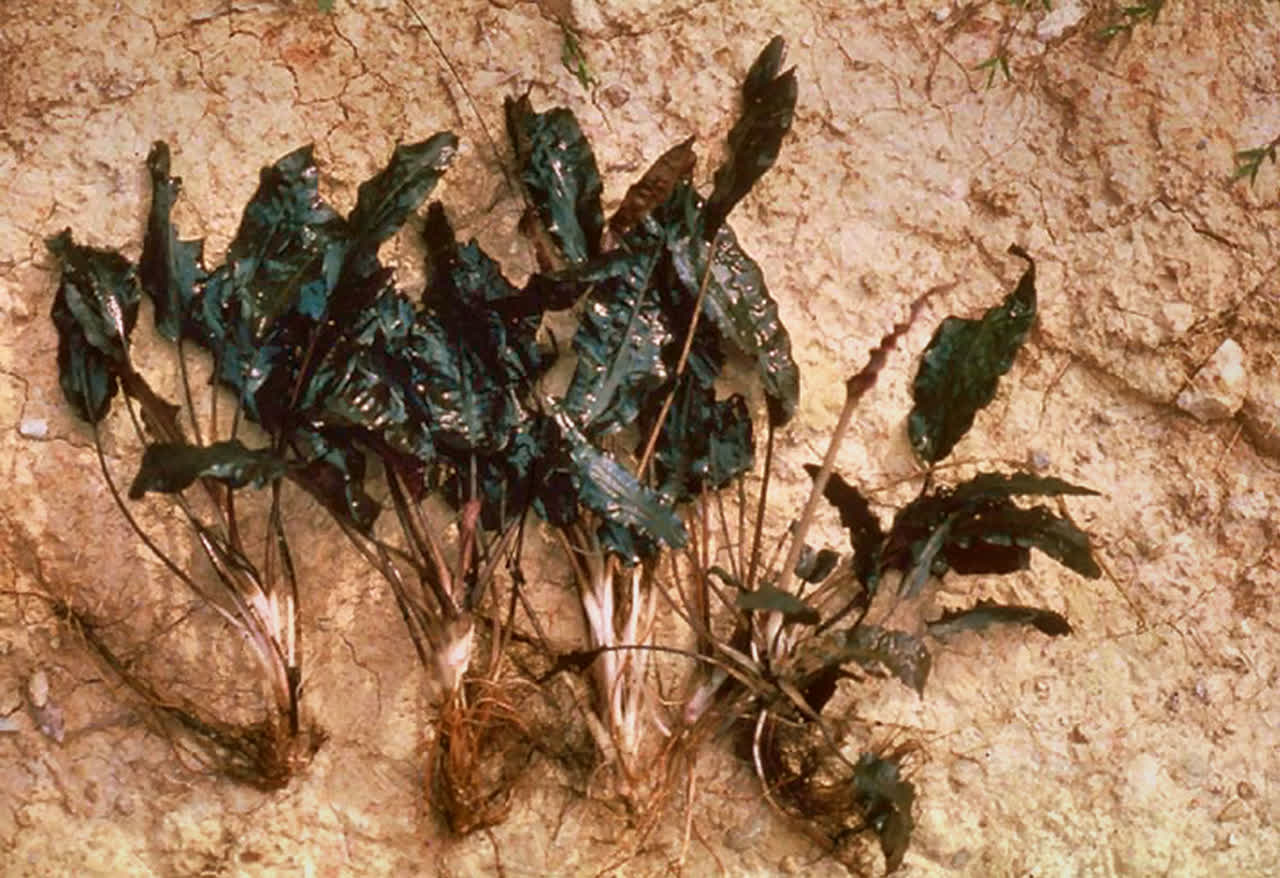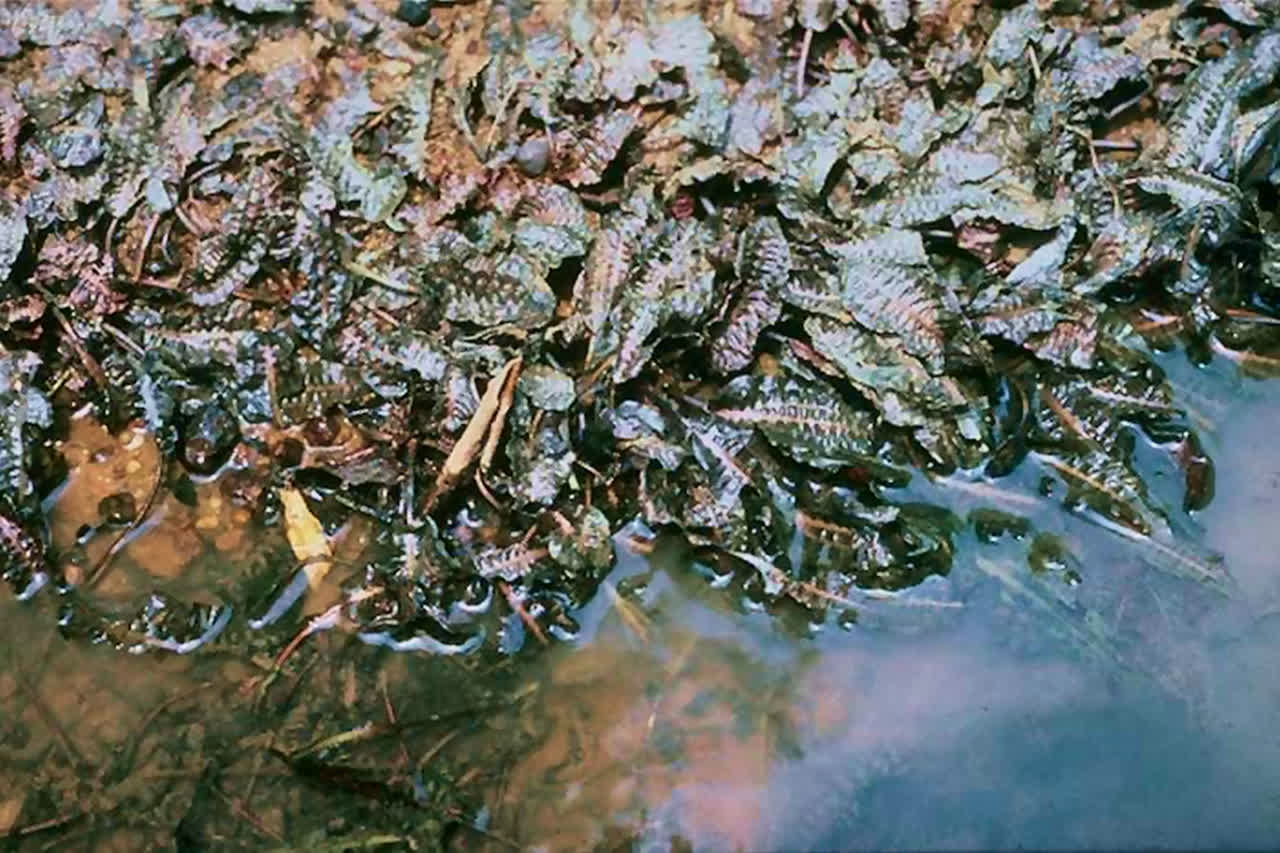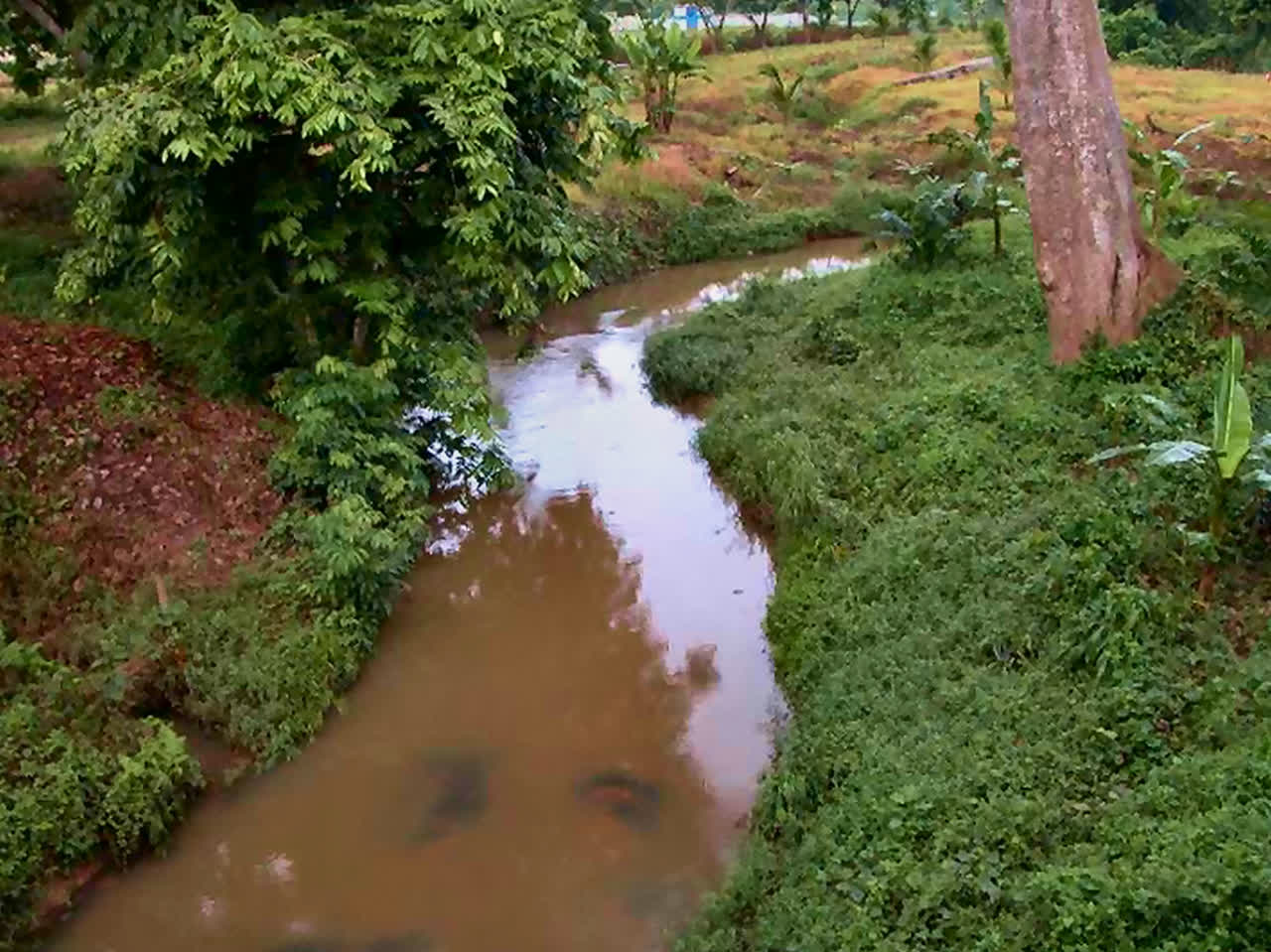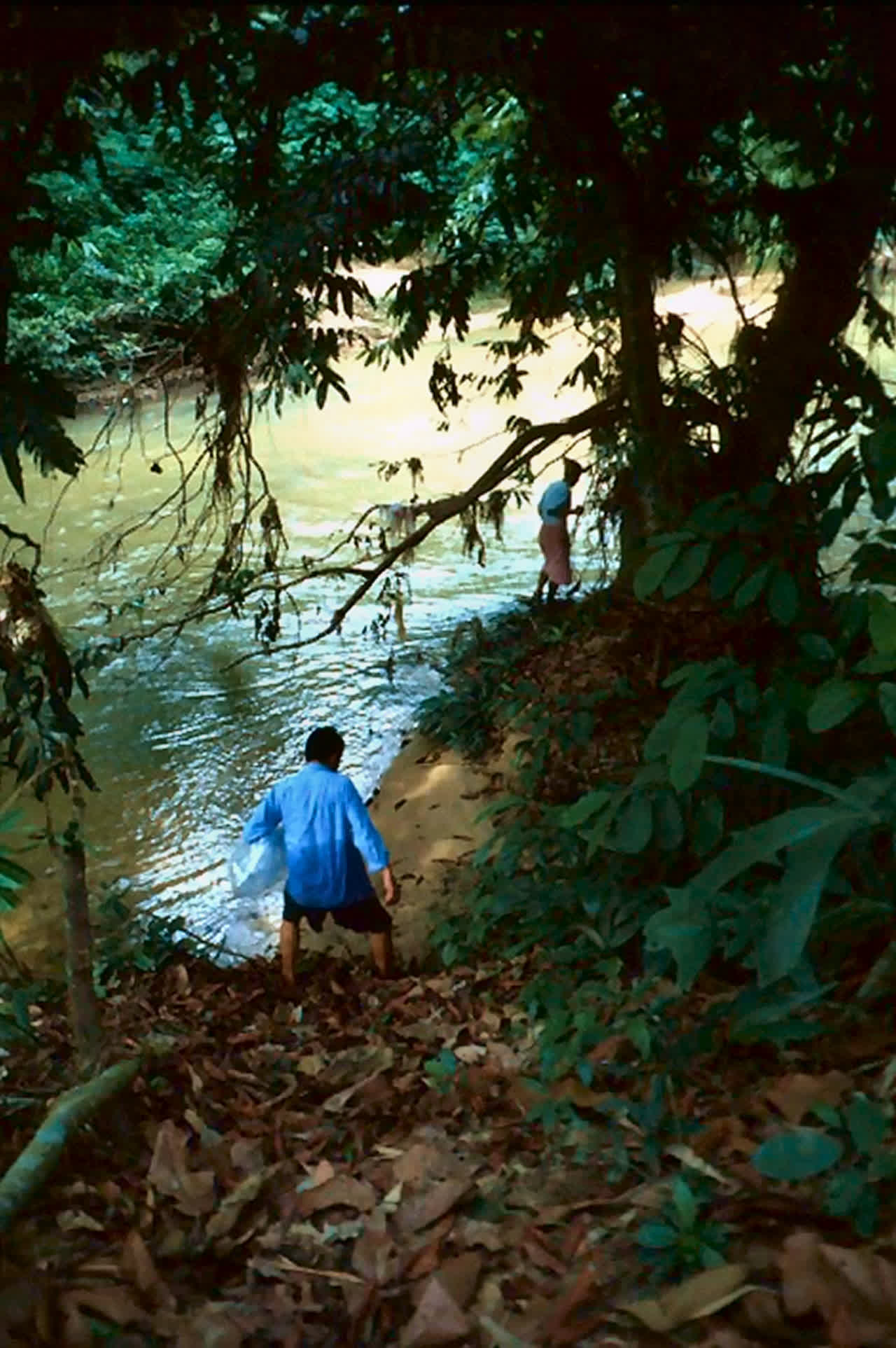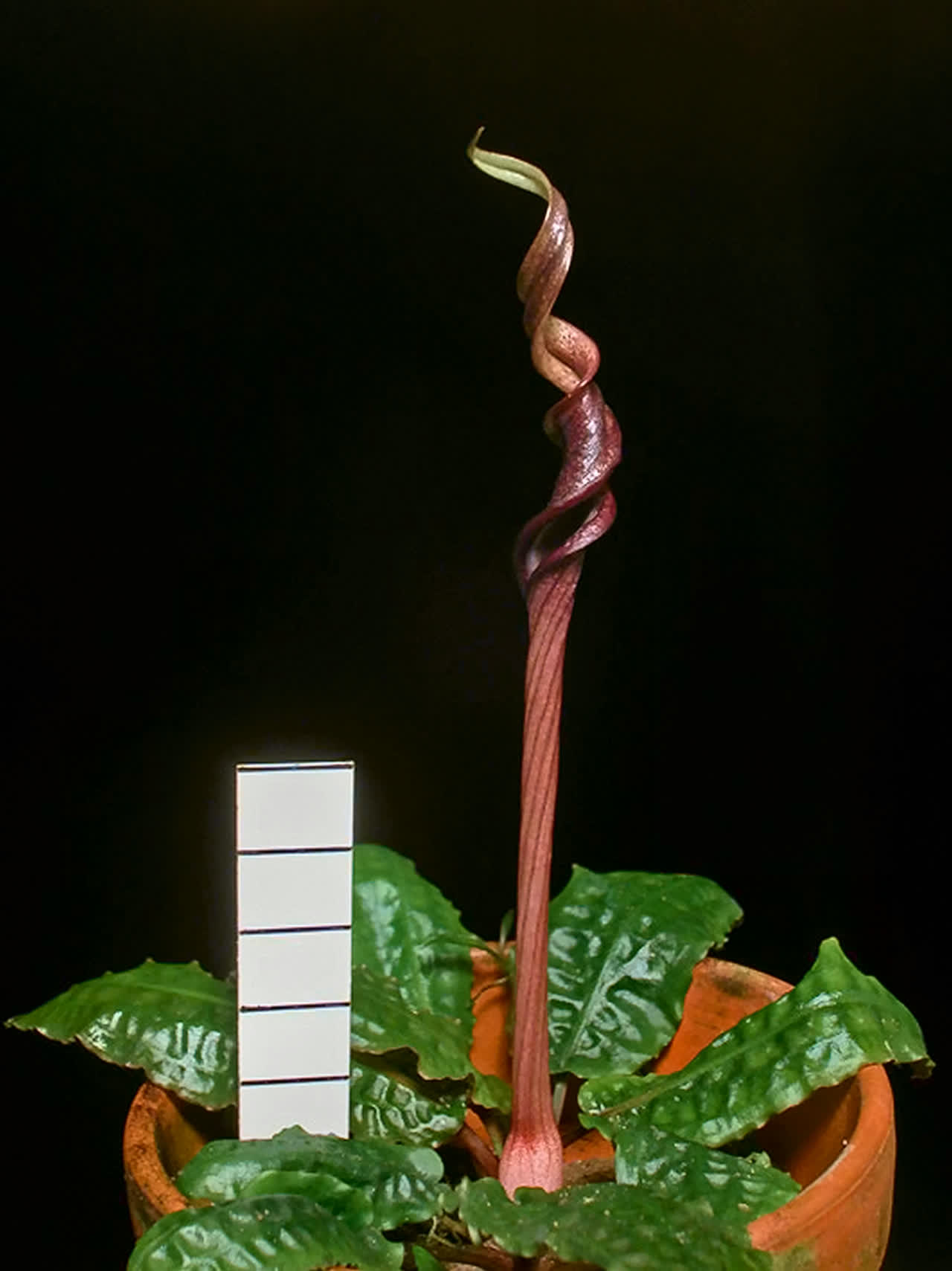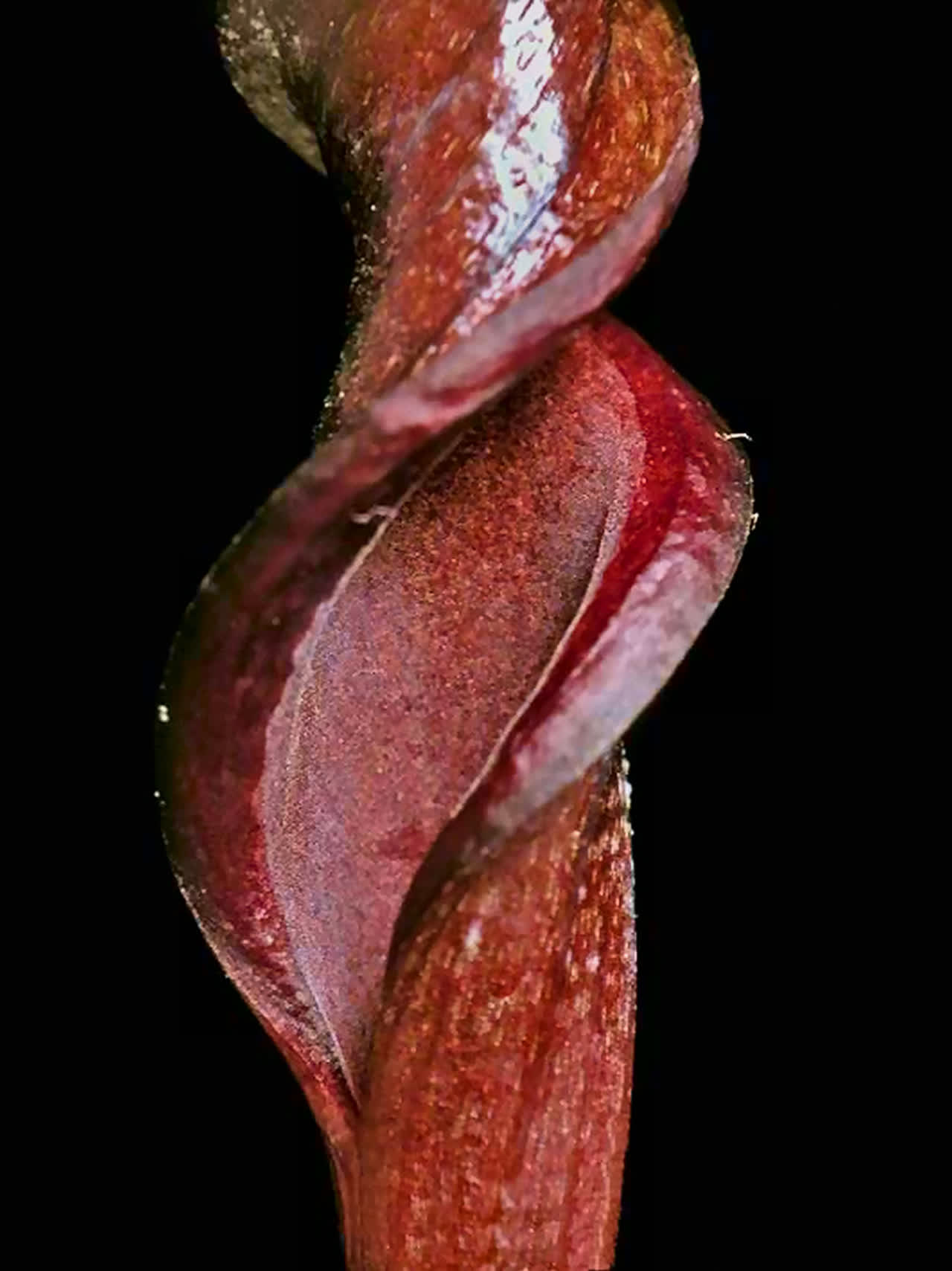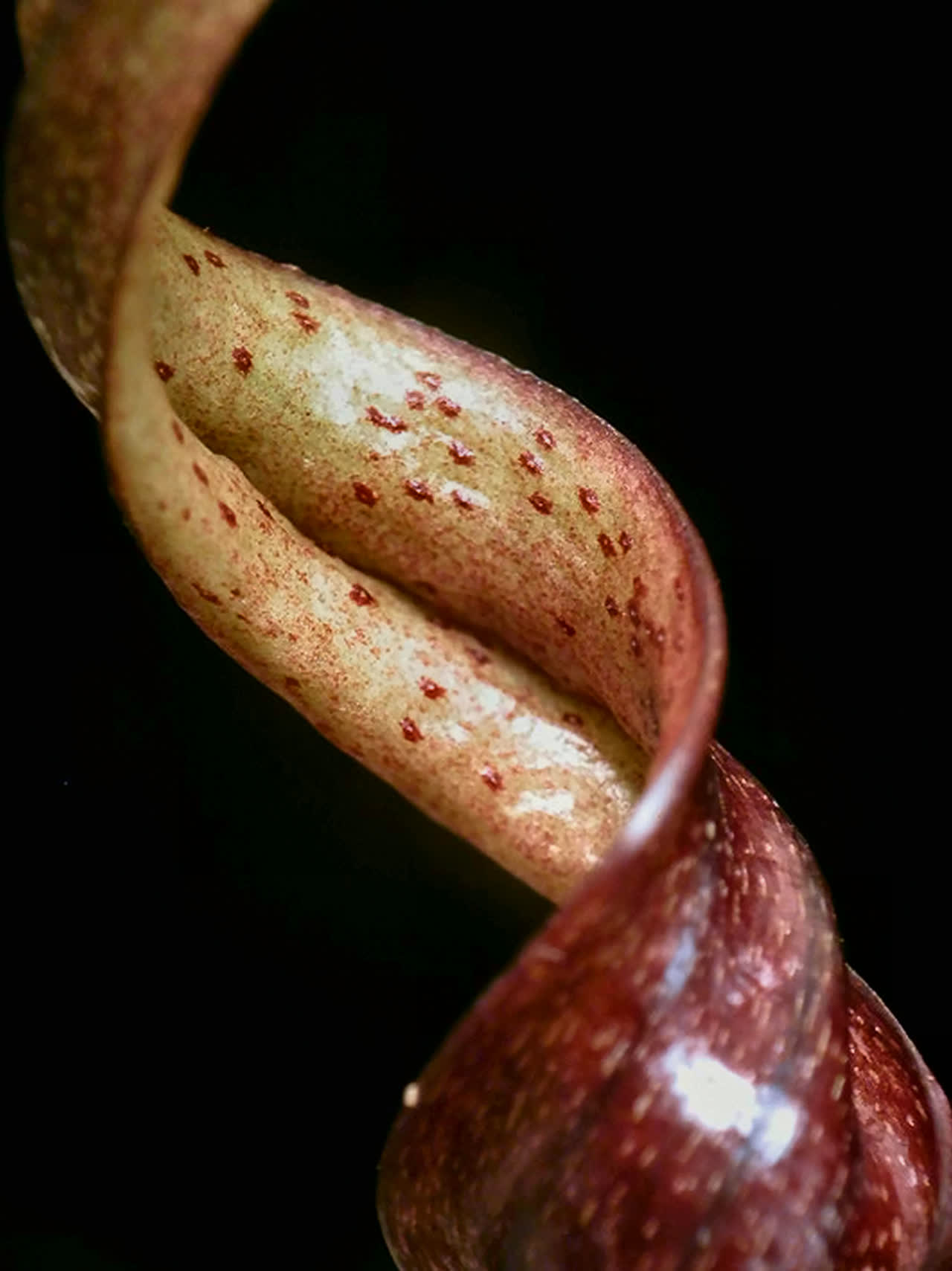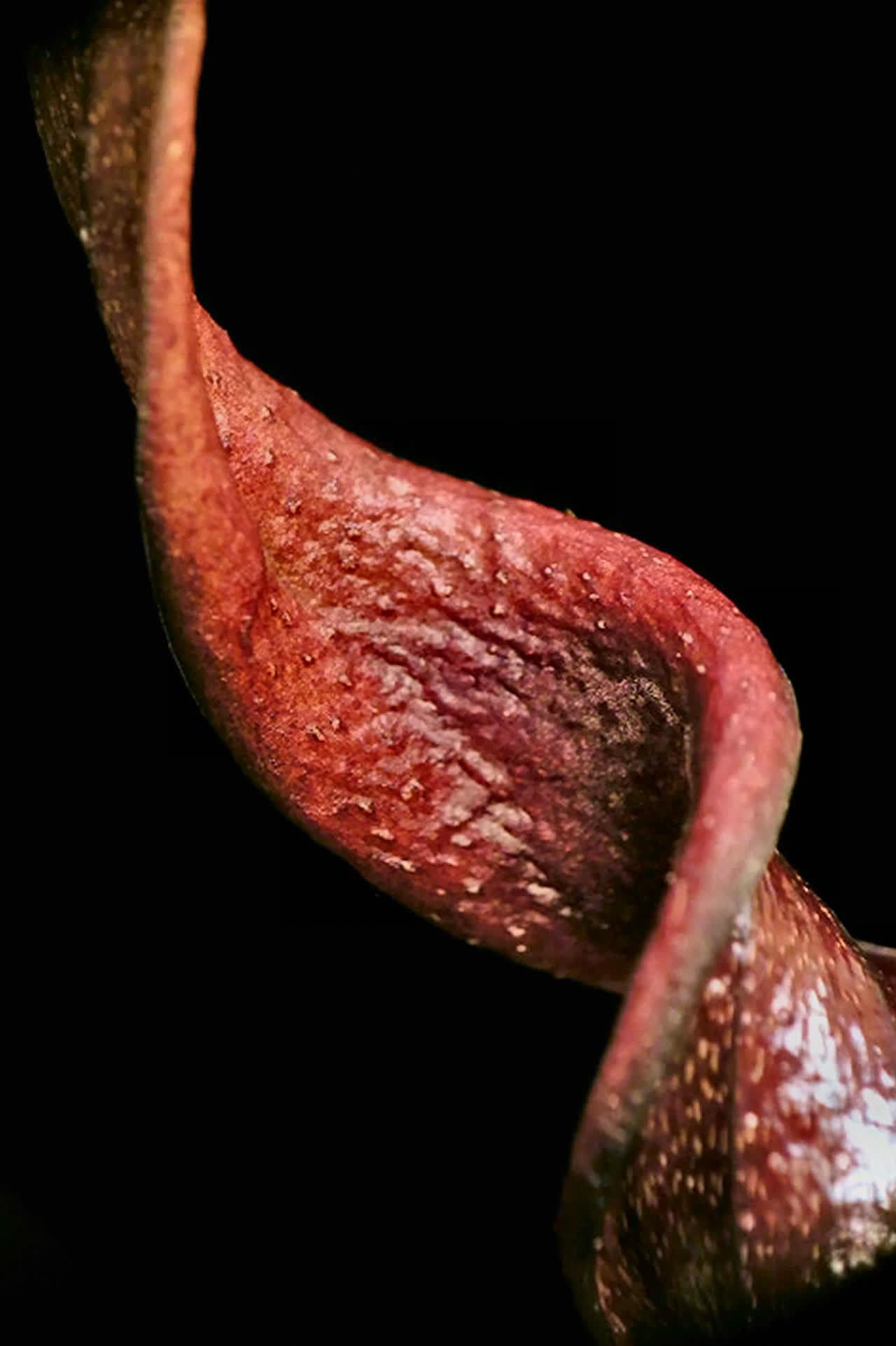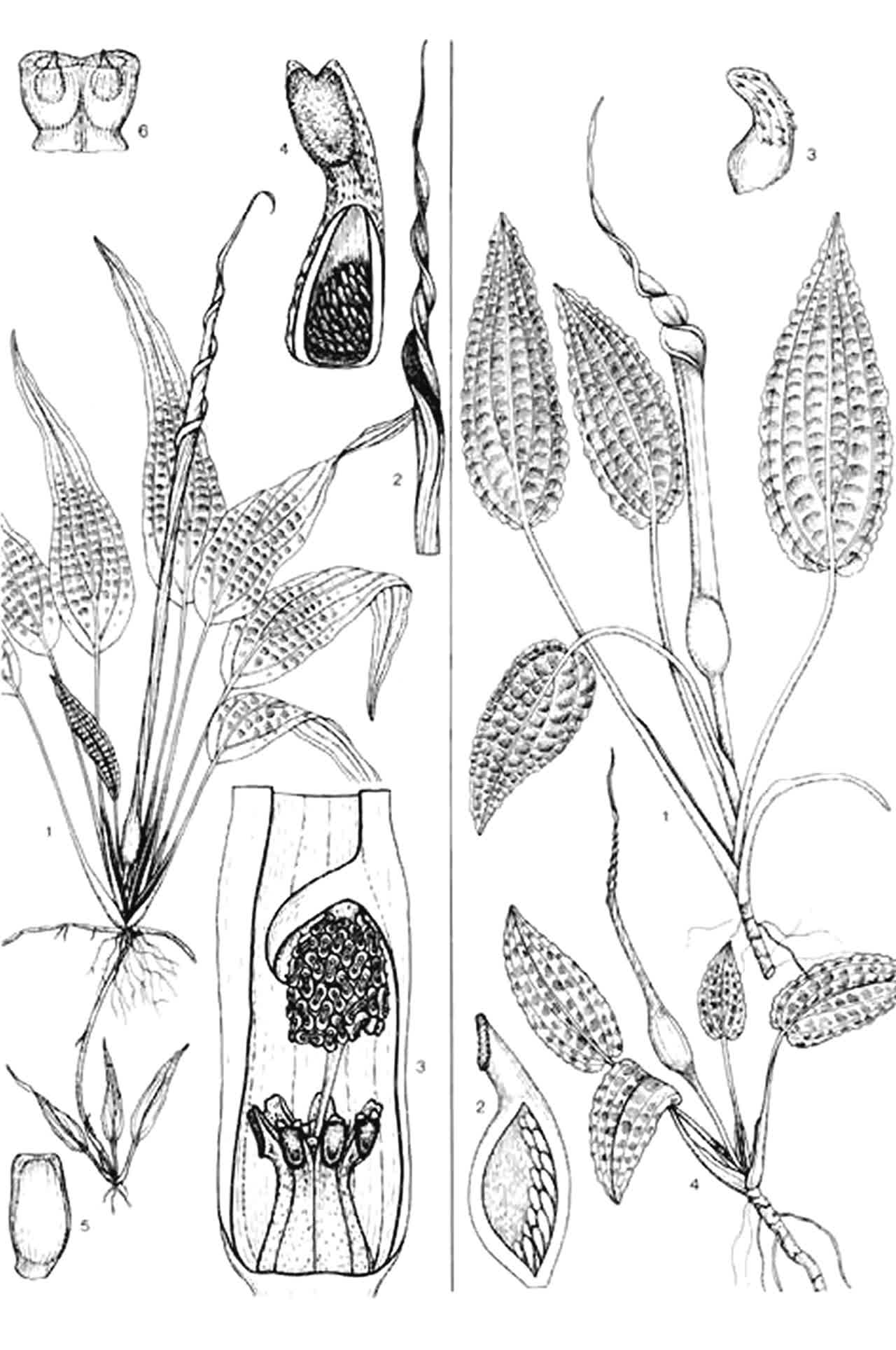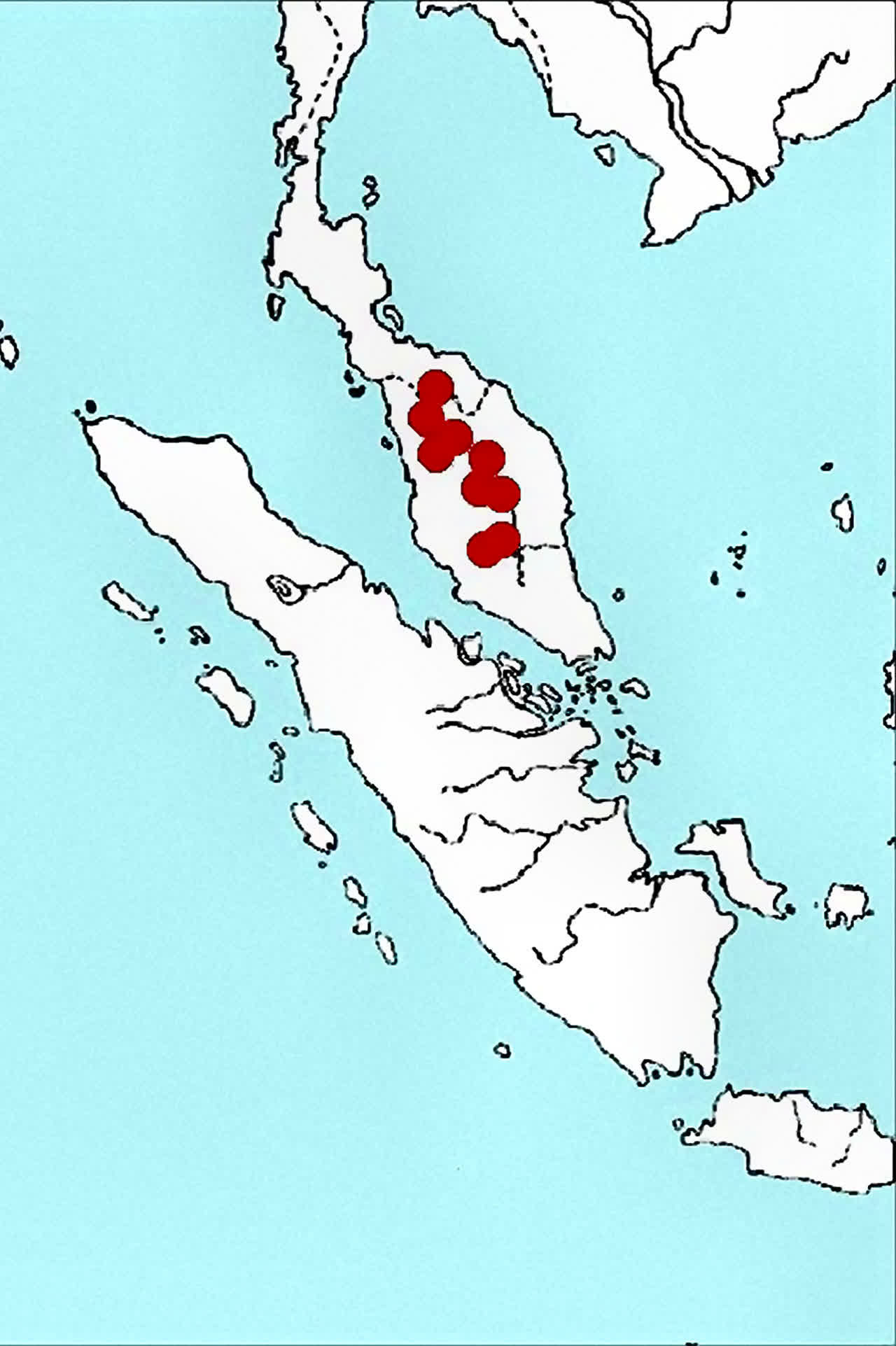| The 'classical' C. affinis in the aquarium with almost smooth, tall,
green leaves.The upper side of the leaves may be dark velvet green with a pale midrib,
the lower side deep purple. Spathe up to 40 cm with many turns. coll. unknown photo Möhlmann |
A submersed cultivated Cryptocoryne affinis. Recent
imports show these rather bullate leaves, sometimes misinterpreted as "C.(pseudo-)bullosa". coll. unknown photo Möhlmann |
This giant leaved C. affinis popped up in Switzerland. With its bullated leaves it strongly resembles C. usteriana but it proved to be a real C. affinis. coll. unknown, cult. B 1424 |
The giant leaved C. affinis in emersed cultivation. The leaves can be brownish and are relative big for an emersed grown C. affinis. All emersed grown plants are strongly bullate. coll. unknown, cult. B 1424 |
Habitat of C. affinis |
| A stream near Jerantut in Pahang State, W. Malaysia in
September. Note the very low water level. coll. NJ 85-16 photo Jacobsen |
A specimen from deeper water with a much longer tube of the
spathe. coll. NJ 85-16 photo Jacobsen |
C. affinis grows partly emerged on the banks. coll. NJ 85-11 photo Jacobsen |
A stream of 6-8 m wide in a cut down oil palm plantation with big patches of C. affinis, partly in full sun. coll. NJM 11-61 photo Jacobsen |
| South of Bentang in Pahang State,
West Malaysia. In May, Sungai Perdak is a ca. 10 m wide river, C. affinis grows on the bank. coll. B 805 |
In the riverbed grows C. affinis fully exposed to the sun. They form dark flecks near the rapid in the shallow, cloudy water. The very small specimens grow in dense mats together with some Hydrilla and Vallisneria. coll. B 805 |
In more sheltered places C. affinis develops rather
big leaves. coll. B 805 |
Plants from the bank grow merely in clay. The plants are very deep
rooted, the white part of the petioles were below surface. coll. B 805 |
| A full green specimen. In emersed culture the leaves are flat on the soil. The lower side mostly pale green with reddish veins. coll. AZ210-6, cult. B 1357 |
The limb may have many turns. coll. unknown,cult. B 1424 |
The collar is hidden in the spiraled limb. Note the stark reflective cells in the throat. coll. unknown, cult. B 1424 |
When wet, the throat shows it real colour. coll. B 805, cult. v Wijngaarden photo van Wijngaarden |
| The top of the limb varies from smooth and cream with some red outgrowths ... coll. AZ210-6, cult. B 1357 |
... to more rough and red coloured. The plants grow 20 km apart. coll. AZ210-11, cult. B 1359 |
In the lower part of the spathe the greenish ovaries and brown stigma's. coll. AZ210-11, cult. B 1359 |
A bit wider kettle with on top of the spadix the male flowers. coll. AZ210-6, cult. B 1357 |
| Note the very small cataphyl just right of the kettle. coll. unknown, cult. B 1424 |
Type material collected by father Scortechini (nr. 586b) around 1890 in
the Larut river (Pahang State, W. Malaysia). Leiden Herbarium |
Line drawing of C. affinis in de Wit (1959, 1990). Left a cultivated specimen of C. haerteliana; right top: Scortechini 586-2, down Corner 23893. drawing Ike Zewald |
Cryptocoryne affinis has a wide distribution in West Malaysia. There is one collection known from the very South of Thailand. |
Literature
Updated May 2013
Hooker, J.D., 1893. Cryptocoryne, Lagenandra in: Flora of British India
6 : 492-496.Jacobsen, N.,1977. Chromosome numbers and taxonomy in Cryptocoryne (Araceae). Bot.Notiser 130 : 71-87.
Jacobsen, N., 1982. Cryptocorynen. Alfred Kernen Verlag, Stuttgart.
Jacobsen, N., 1986. Deterioration of the habitats of the Cryptocoryne species. Symp. Bedreiging van het aquatisch milieu, Ludwigia, Wageningen : 33. (Document service)
Jacobsen, N. & J.Bogner, 1987. Die Cryptocorynen der Malaiischen Halbinsel (2.Teil). Aqua-Planta 1-87 : 13-20.
Jacobsen, N., T. Idei & D. Sookchaloem, 2012. Cryptocoryne in the Flora of Thaland, Volume 11, Part 2: 218-232, plates 45-58.
Kasselmann, C., 1995. Aquarienpflanzen. Ulmer, Stuttgart.
Mansor, M., Z. Yasin & A. Ali, 1990. Notes on the Distribution of Cryptocoryne affinis (Araceae) in Ulu Kinchin, Pahang, Malaysia. Malayan Nature Journal 43 : 256-258.
Mansor, M., E.Tan, H.Baharuddin, 1991. A "Hidden Club" in Taman Negara, Peninsular Malaysia. Malayan Naturalist 45(1/2) : 8.
Milkuhn, F.G.,1949. Cryptocoryne haerteliana Jacobs. spec. nova. Wochenschrift f Aq. u Terr.kunde 43 : 288-290. (Document service)
Möhlmann, F., 1985. Eine empfehlenswerte Pflanze : Cryptocoryne affinis. Das Aquarium 192 : 284-286.
Möhlmann, F., 1985. Nicht alles ist Cryptocoryne bullosa was gebuckelte Blätter hat. Aqua-Planta 1-85 : 12-14.
Othman, A.S., N. Jacobsen & M. Mansor, 2008. Cryptocoryne of Peninsular Malaysia.
Rataj, K., 1975. Revision of the genus Cryptocoryne Fischer. Studie CSAV, c.3.Praha.
Rataj, K. &amamp; Horeman, T.J., 1977. Aquarium Plants. TFH Publ, USA.
Ridley, H.N., 1907. Cryptocoryne, Fisch. Materials for a Flora of the Malayan Peninsula : 3 - 6.
Ridley, H.N., 1925. Cryptocoryne. Fl. Malay Pen. 5 : 86-88.
Roe, C.D., 1967. A manual of aquarium plants. Shirley aquatics Ltd.
Sadilek, V., 1974. Problemen bij de cultuur van Cryptocorynen. Het Aquarium 45(*) : 61-63.
Schöpfel, H., 1967. Abnorme Blütenbildung bei C.affinis. Aq.& Terr (*) : 422.
Schöpfel, H., 1977. Cryptocoryne affinis N.E.Br.ex Hooker f. und Bemerkungen zur systematischen Darstellung von Cryptocoryne haerteliana und C.sp."pseudobullosa". Info ZAG Wasserpflanzen 4-1977 : 3 - 5.
Schulze, J., 1967. Beobachtungen über Wasserpflanzen in einigen südostasiatischen Ländern I-IV. DATZ 20 :11-215, 248-252, 279-282.
Vlugt, P.J.van der, 1969. Bullosa of 'pseudo-bullosa' ? Het Aquarium 40(2) : 37-40.
Wit, H.C.D.de, 1953. Cryptocoryne haerteliana Jacobs. ex Milk. Het Aquarium 24(2) : 41-43.
Wit, H.C.D.de, 1958. Cryptocoryne affinis. Fishkeeping, march 1958: 230.
Wit, H.C.D.de, 1959. Het genus Cryptocoryne 7. Cryptocoryne affinis. Cryptocoryne aponogetifolia. Het Aquarium 9(12) : 273-275.
Wit, H.C.D.de, 1990. Aquarienpflanzen, 2. Auflage. Ulmer, Stuttgart.
